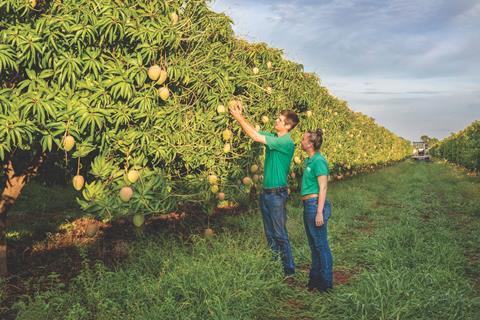Piñata Farms predicts lighter crop following fluctuating winter temperatures but night-picking practices keep quality high for the premium mango brand
One of Australia’s leading fruit producers, Piñata Farms, has opened its Honey Gold mango harvest for the 2024/2025 season, predicting a lighter-than-usual crop and consistent, high-quality fruit for the premium retail brand.

Piñata Farms, which maintains a 10 per cent share of the Australian mango market, has three farms spanning 650ha across Darwin, Katherine and Mataranka, producing fruit from some 200,000 trees.
A network of about 30 third-party growers in Queensland, New South Wales, Victoria and Western Australia also supply fruit under the Honey Gold brand to national supermarket customers throughout the season from November to March.
Piñata Farms managing director, Gavin Scurr attributes the lighter season to a poor flowering across the Territory due to fluctuating temperatures during winter, when flowering is determined.
“Honey Gold mangoes need at least ten consecutive days of minimum temperatures below 15°C to achieve good flowering and a promising volume. Dry winters – when flowering occurs – are best,” Scurr says.
“While at this early stage, it appears there will be fewer Honey Golds this season, the volume could change as we get into the season, which we’ve seen happen before.”
All three Territory farms – planted in stages since 2009 – are now in full production, he says.
Scurr says Piñata Farms has planted strategically at Humpty Doo near Darwin to produce a crop in October and extend the season by a few weeks. This year, however, Darwin and Katherine were harvesting simultaneously, with Mataranka following.
Piñata Farms’ third-party growers also predict a lighter season, particularly in Queensland, the biggest growing region.
Despite this, Scurr says a steady supply of Honey Golds is assured for Christmas with peak production expected around early January.
Honey Gold mangoes are harvested overnight when Northern Territory conditions are cooler, and storms are less likely, a unique approach in the Australian mango industry.
“This results in better shelf-life as fruit has had time to fully rehydrate after the heat of the day,” Scurr says. “The practice is also better for pickers and eliminates the risk of sunburn and heatstroke.



